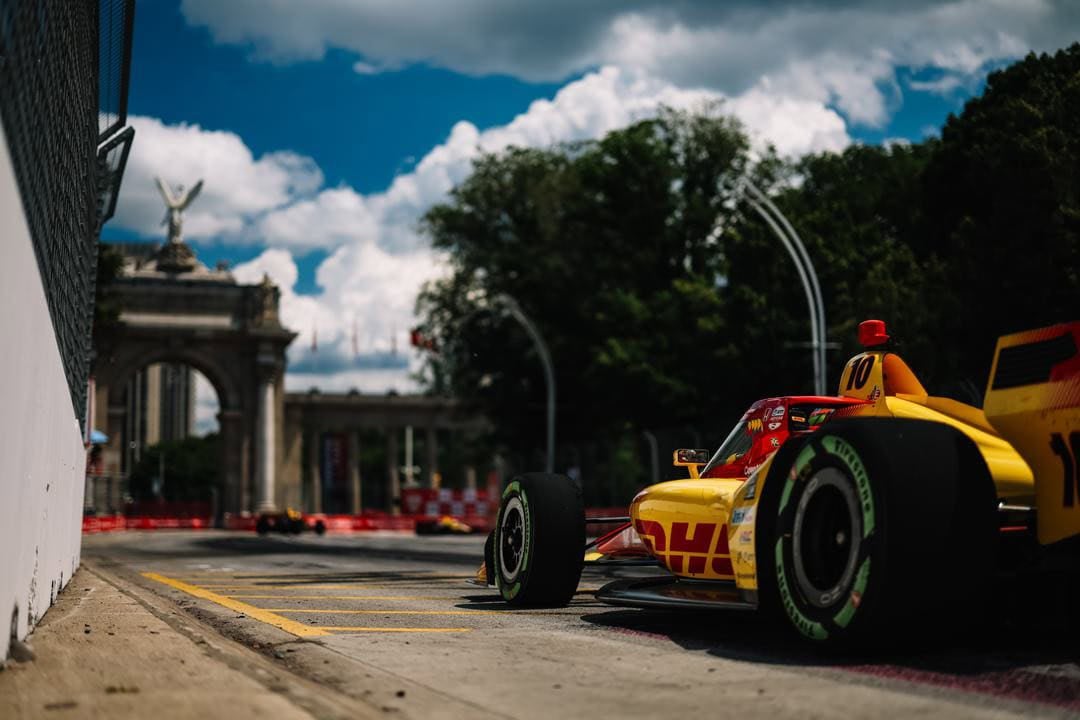Through most of the 2025 NTT IndyCar Series season, Alex Palou has appeared untouchable. With remarkable consistency and a team that rarely misses, he’s carved out a commanding lead in the championship. But in Toronto, for the first time this year, the system cracked.
Palou’s 12th-place finish at the Honda Indy Toronto wasn’t the result of driver error or mechanical failure. Instead, it simply came down to a strategy that didn’t pan out.
A Calculated Risk
Starting from second on the grid, Palou and teammate Scott Dixon opted for a strategy that diverged from most of the field. Both drivers began the race on black Firestone Primary tires, a harder compound that typically lasts longer but lacks the early grip of the softer Alternates. It was a gamble, and on a track like Toronto, it had real potential.
Early caution periods seemed to support the approach. With cautions interrupting race flow, the strategy could have allowed Palou and Dixon to stretch their stints and capitalize when the field reshuffled. However, that wasn’t the case.
What looked like a clever call on paper unraveled as the race progressed. The caution timing did not sync with the team’s pit windows. Instead of leaping forward as others cycled through stops, Palou and Dixon were shuffled backward and stuck in the crowded midfield. With clean air hard to find and passing at a premium, both drivers were forced to fight from a disadvantaged position.
Simply put, while the amount of cautions should have worked in Palou’s favor, the timing of the cautions did not.
“We chose a very aggressive strategy,” Palou told Frontstretch. “We knew we were going to put ourselves in danger. But the car was fast. We tried everything. The only mistake we made today was choosing that strategy, which I was pulling for a lot, so it was more my bad instead of the team’s, so yeah. We’ll learn from it and move forward.”
A Rare Miss
Palou’s 12th-place finish was his lowest of the season in a race unaffected by damage or major incidents. For a driver who has made consistency look easy, this result stood out. He had not finished outside the top 10 all year under normal circumstances. In fact, it marked the first time the No. 10 car looked genuinely out of rhythm.
Watching Palou struggle to make progress in the final stint told the story. The strategy had placed him in the wrong place at the wrong time, and sometimes that’s all it takes.
Still in Control
Despite the setback, Palou leaves Toronto still firmly in command of the championship. His lead was trimmed by 30 points, but it remains healthy at 99 points.
In the big picture, one subpar result won’t derail Palou’s title hopes. If anything, Toronto served as a reminder that even the most well-oiled operations are susceptible to the unpredictable nature of racing. Strategy in IndyCar often walks a fine line between brilliance and miscalculation, and this time, it leaned toward the latter.
What Comes Next
For Palou and Ganassi, the key is to bounce back with the same calm and focus that have defined their season. Toronto will go down as a rare blip for a driver in the midst of another remarkable year. And if history is any indicator, Palou will be back at the front at Laguna Seca.



